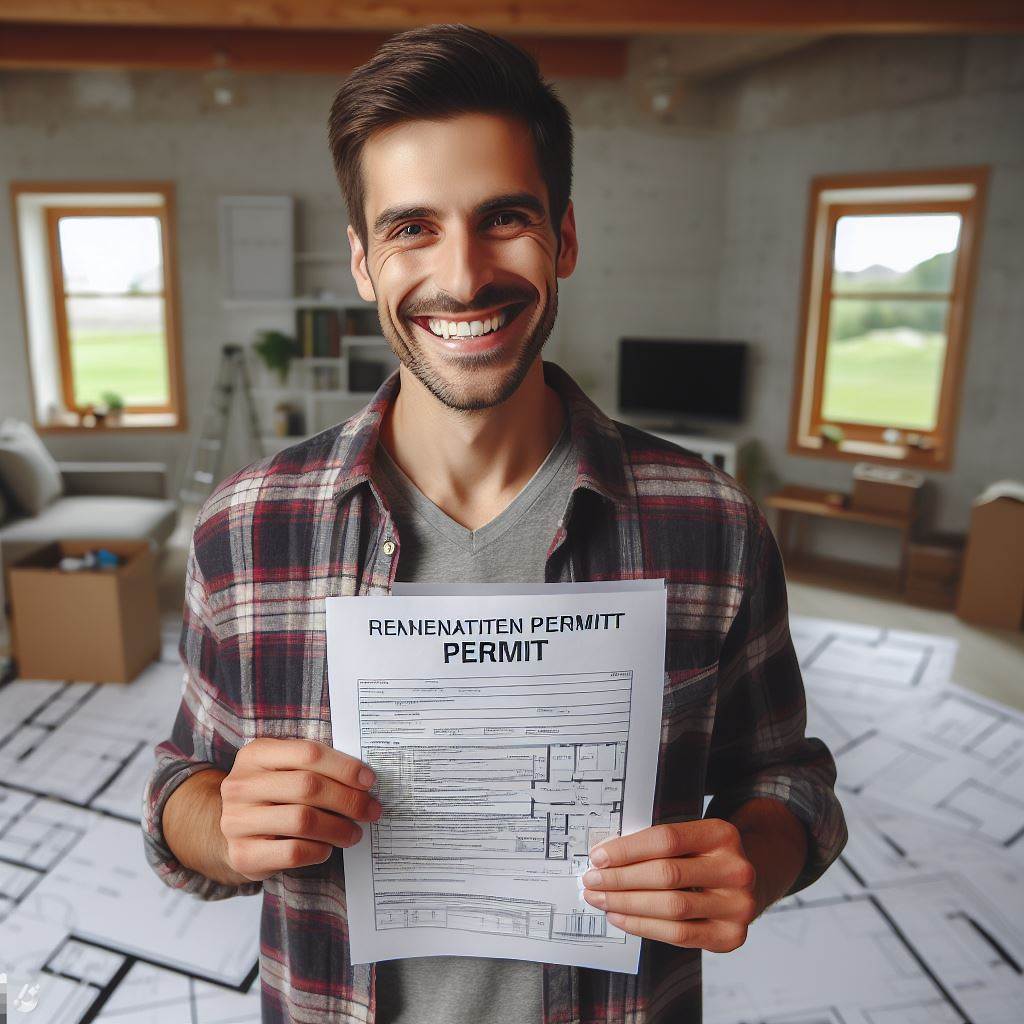Introduction
Building codes play a crucial role in the real estate industry as they ensure the safety and compliance of structures.
This blog post aims to provide a beginner’s guide to decoding building codes.
Importance of Building Codes in the Real Estate Industry
Building codes are essential for maintaining the safety and structural integrity of buildings.
They serve as a set of regulations that dictate how buildings should be designed, constructed, and maintained.
These codes safeguard occupants from potential hazards and ensure that structures meet certain standards.
Complying with building codes is not only a legal requirement but also a moral responsibility for developers, architects, and contractors.
Building inspections are carried out to ensure that codes are followed, ensuring the safety of future occupants.
Non-compliance can result in penalties, lawsuits, and even the demolition of a building.
Purpose of the Blog Post
The purpose of this blog post is to provide a beginner’s guide to decoding building codes.
Many people find building codes complex and confusing, which can hinder their understanding and decision-making processes.
By decoding these codes in a simplified manner, we aim to help readers navigate the complexities involved in construction projects effectively.
This blog post will break down the different aspects of building codes, explain the terminology used, and offer practical tips for compliance.
By the end of this guide, readers should have a clearer understanding of the purpose, significance, and methods for decoding building codes.
Through this blog post, we aim to empower readers with the knowledge and confidence to navigate building codes confidently.
Understanding and complying with these codes will ensure the safety, durability, and quality of buildings, benefiting both occupants and the real estate industry as a whole.
What are building codes?
Definition and basic explanation
Building codes are regulations set by governmental bodies that dictate the minimum standards for constructing buildings.
They cover various aspects of construction, including structural integrity, fire safety, electrical systems, and accessibility.
Objective of building codes
The main objective of building codes is to ensure the safety and well-being of occupants and the community as a whole.
By setting specific standards, codes help to prevent accidents, minimize property damage, and promote sustainable and efficient building practices.
Different types of building codes (e.g., national, state, local)
There are several types of building codes that exist at different levels of government.
These include national codes, which provide the overarching framework for construction regulations in the country.
State codes are specific to each state and may have additional requirements to address regional concerns.
Local building codes, on the other hand, are specific to individual cities or municipalities.
They often incorporate the national and state codes but may also include additional regulations particular to the local area. For example, coastal regions may have building codes that address hurricane resistance, while earthquake zones may have codes focused on structural strength.
Building codes are typically developed through a collaborative process involving various stakeholders, such as architects, engineers, builders, and government officials.
These codes are regularly updated to reflect advancements in technology, changes in societal needs, and lessons learned from past incidents.
Benefits of building codes
One of the key benefits of building codes is the consistency they bring to construction practices.
By adhering to a set of standards, builders can ensure that their structures meet minimum safety requirements.
This protects both the occupants and the builders themselves from potential liabilities.
Building codes also play a crucial role in reducing the impact of disasters.
For example, fire safety codes help to minimize the risk of fires spreading and allow for effective evacuation plans.
Structural codes ensure that buildings can resist extreme weather events, lowering the potential for property damage and loss of life.
In addition to safety, building codes also address other important considerations.
These may include energy efficiency, accessibility for people with disabilities, and sustainability.
Codes can mandate features such as insulation, energy-efficient lighting, and renewable energy systems to promote environmental responsibility.
Compliance with building codes is typically enforced through building inspections.
Certified inspectors review construction projects at various stages to ensure that they meet the required standards.
Failure to comply can result in fines, penalties, and even the halt of construction until necessary changes are made.
To ensure compliance, it is essential for builders, architects, and contractors to stay updated on the latest building codes.
This can be done by regularly consulting the relevant authorities and participating in professional development courses.
Building code violations can have significant consequences, both legally and financially, so it is vital to prioritize adherence.
In essence, building codes are crucial regulations that aim to ensure the safety, well-being, and sustainability of buildings.
They encompass various aspects of construction and exist at national, state, and local levels.
Adhering to building codes is not only a legal requirement but also a responsibility that builders and professionals must uphold to protect communities and create resilient structures.
Read: Navigating Permits for Historic Buildings
History of Building Codes
Evolution and Development Over Time
Building codes, the silent guardians of structural safety, have a rich history marked by constant evolution.
They originated as a response to devastating incidents, pushing humanity to prioritize safety in construction.
Codes trace their roots to ancient civilizations. In the third millennium BCE, the Code of Ur-Nammu in Mesopotamia set standards for builders, ensuring structural integrity.
The Hammurabi Code, circa 1754 BCE, went further, specifying penalties for negligent construction.
The Greeks, with their architectural prowess, developed rules to safeguard public structures. However, it was the Romans who left an enduring legacy.
The Twelve Tables, circa 450 BCE, included guidelines for builders, emphasizing accountability.
The Middle Ages witnessed a decline in construction standards. Amid chaotic times, codes languished. It wasn’t until the Renaissance that a resurgence occurred.
Architectural treatises by Vitruvius and Alberti emphasized principles of stability, laying the foundation for modern codes.
Influential Events or Incidents that Shaped Building Codes
As civilizations thrived, tragic incidents propelled the refinement of building codes.
The Great Fire of London in 1666, a catastrophic event that razed the city, prompted the first comprehensive regulations.
London’s Rebuilding Act of 1667 mandated fire-resistant materials, influencing future codes globally.
Chicago’s Great Fire in 1871 marked a turning point.
The devastation led to the adoption of stringent building codes, introducing fireproofing measures and shaping modern urban planning.
This incident catalyzed a global shift towards safer construction practices.
The Triangle Shirtwaist Factory fire in 1911, a poignant reminder of workplace safety, triggered significant reforms.
Building codes expanded to address not just structural stability but also occupant well-being, underscoring the interconnectedness of safety standards.
The mid-20th century witnessed a surge in technological advancements.
The advent of materials like steel and concrete revolutionized construction but also necessitated updated codes.
The focus shifted to seismic resilience, energy efficiency, and accessibility.
In short, the evolution of building codes mirrors humanity’s journey towards safer and more resilient structures.
Influenced by ancient wisdom and propelled by tragic events, codes continue to adapt, ensuring that the buildings we inhabit stand as testaments to both progress and safety.
Read: Art Deco Influence in 2024 Real Estate
Key Components of Building Codes
Building codes are essential to ensure the safety, functionality, and sustainability of structures.
They encompass various regulations and guidelines that govern different aspects of construction. Here are some key components of building codes:
Structural Requirements
Structural requirements address the strength, stability, and durability of a building’s framework.
They dictate the design and construction of foundations, walls, roofs, floors, and other structural elements.
This ensures that buildings can withstand environmental forces like wind, earthquakes, and snow loads.
Fire Safety Regulations
Fire safety regulations aim to prevent fires, limit their spread, and facilitate safe evacuation.
They cover aspects such as fire-resistant materials, fire escapes, exit signs, fire alarms, and sprinkler systems.
These regulations reduce the risk of fire-related injuries, fatalities, and property damage.
Accessibility Standards
Accessibility standards guarantee that buildings are usable by individuals with disabilities.
They mandate features like ramps, elevators, wide doorways, and accessible restrooms.
These standards promote inclusivity and equal access for all people, regardless of their abilities.
Electrical, Plumbing, and Mechanical Codes
Electrical, plumbing, and mechanical codes govern the installation and operation of related systems within a building.
They ensure the safety, functionality, and efficiency of electrical wiring, plumbing fixtures, and mechanical equipment.
These codes protect occupants from the risks of electrical shocks, water leaks, and malfunctioning HVAC systems.
Energy Efficiency Guidelines
Energy efficiency guidelines promote sustainable building practices and reduce energy consumption.
They include requirements for insulation, windows, lighting, HVAC systems, and renewable energy sources.
These guidelines help reduce greenhouse gas emissions and minimize reliance on non-renewable energy sources.
Zoning and Land Use Regulations
Zoning and land use regulations govern how properties can be utilized and developed within a specific area.
They define permitted land uses, building setbacks, building heights, parking requirements, and density limits.
These regulations ensure orderly development, protect property values, and preserve natural resources.
In general, building codes consist of various key components that cover structural, fire safety, accessibility, electrical, plumbing, mechanical, energy efficiency, and zoning aspects.
Compliance with these codes is crucial to create safe, accessible, and sustainable structures.
Read: Window Trends: 2024’s Clear Views

The Role of Building Codes in Real Estate Development
In the world of real estate development, building codes play a crucial role in ensuring the safety and integrity of structures.
These codes are a set of regulations that govern the design, construction, and maintenance of buildings.
Let’s delve into the significance of building codes in various aspects of the construction industry.
Ensuring Safety and Public Health
Building codes aim to protect the occupants of a building from potential hazards and emergencies.
They provide guidelines for fire safety, structural stability, and accessibility for people with disabilities.
By adhering to these codes, developers can create buildings that are safe and conducive to public health.
Protecting Individual Property Rights
Building codes also work to safeguard individual property rights and prevent conflicts among neighboring properties.
These codes outline rules regarding setbacks, height restrictions, and land use, ensuring fair and equitable development.
By following these regulations, developers can avoid potential legal disputes and protect their investments.
Promoting Sustainable and Environmentally-Friendly Construction Practices
Building codes play a vital role in promoting sustainability in the construction industry.
They encourage the use of energy-efficient systems, renewable materials, and environmentally-friendly construction practices.
By incorporating sustainable design principles, developers can reduce the carbon footprint of their buildings.
This, in turn, contributes to a greener and more sustainable future for both the industry and the environment.
Facilitating Compliance and Quality Control
Building codes act as a guide for developers, architects, and engineers to ensure compliance with industry standards.
They provide a framework for conducting inspections, obtaining permits, and ensuring the quality of construction.
By following these codes, stakeholders can streamline the development process and maintain high construction standards.
Enhancing Public Confidence
Building codes instill confidence in the public regarding the safety and reliability of structures.
Homebuyers, tenants, and investors feel reassured knowing that buildings comply with strict regulations.
Moreover, adherence to building codes enhances the reputation of developers and professionals in the industry.
The Importance of Understanding Building Codes
Developers, architects, contractors, and anyone involved in the construction industry must have a comprehensive understanding of building codes. It ensures:
- Compliance with legal requirements and avoids penalties and fines.
- Protection of public safety and health by creating structurally sound and hazard-free buildings.
- Minimization of construction-related risks and liabilities.
- Prevention of construction delays and costly rework due to non-compliance.
In review, building codes play a vital role in real estate development, prioritizing safety, protecting property rights, and promoting sustainable practices.
Understanding and adhering to these codes are essential for all stakeholders to ensure successful and responsible construction projects.
Read: Sustainable Flooring Options for 2024
Challenges related to building codes
Building codes play a crucial role in ensuring the safety and integrity of structures. However, they are not without their challenges.
In this section, we will explore the various difficulties that arise in relation to building codes.
Complexity and Frequent Updates
Building codes are complex documents that contain detailed regulations and requirements.
They are often written in technical language, making them difficult for average individuals to understand.
Moreover, these codes are regularly updated to reflect changing standards and advancements in construction practices.
This constant evolution adds to the complexity and creates challenges for builders, architects, and contractors, who must stay updated and familiarize themselves with the latest codes and amendments.
Compliance Difficulties for Older Buildings
One of the significant challenges associated with building codes is compliance for older buildings.
Many structures were constructed before the implementation of modern building codes or have undergone modifications that do not meet current standards.
Bringing these buildings into compliance can be costly and technically demanding.
Historic buildings, in particular, pose unique challenges as they require specialized preservation techniques while still meeting safety requirements.
Balancing the preservation of architectural heritage with adherence to codes can be a delicate process.
Varied Interpretations and Implementation
Building codes offer guidelines, but their interpretation and implementation can vary between jurisdictions and individuals.
This variability often leads to inconsistencies and conflicts. Architects may interpret certain requirements differently, leading to discrepancies in designs.
Local authorities responsible for enforcing the codes may have different interpretations, resulting in delays and complications during the permitting process.
These variations can create confusion and hinder the smooth execution of construction projects.
Strategies to navigate these challenges
Despite these challenges, building codes are essential for safeguarding public health, welfare, and safety.
They provide a standardized framework that ensures structures are built to withstand various hazards and meet basic minimum standards.
Overcoming the challenges related to building codes requires a collaborative effort from all stakeholders involved in the construction process.
To navigate these challenges, builders and architects can adopt several strategies:
Continuous Education and Training
Staying updated with the latest code revisions through training programs and workshops is crucial.
By investing in their professional development, builders and architects can enhance their knowledge and ensure compliance with the most recent requirements.
Collaboration and Communication
Open dialogue and collaboration between architects, builders, and code officials play a vital role in addressing challenges.
Regular communication helps clarify code interpretations, resolves issues, and ensures that all parties are on the same page.
Engaging Code Consultants
Seeking assistance from code consultants can help streamline the compliance process, especially for older buildings.
These professionals are well-versed in building codes and can provide guidance on how to meet compliance requirements while preserving the unique characteristics of historic structures.
Embracing Technology
Advances in technology, such as building information modeling (BIM), can greatly assist in complying with building codes.
BIM enables the creation of virtual models that allow designers and builders to identify and address code violations before construction begins.
This reduces errors, saves time, and enhances compliance.
In a nutshell, while building codes present challenges in terms of complexity, compliance for older buildings, and varied interpretations, they are essential for ensuring safety and structural integrity.
By actively addressing these challenges through continuous education, collaboration, seeking professional assistance, and embracing technology, stakeholders can overcome these obstacles and create buildings that meet the highest standards of safety and construction practices.
How to navigate building codes
Building codes can be complex and intimidating, but understanding them is essential for anyone involved in the construction or renovation process.
Whether you’re a homeowner, architect, engineer, contractor, or even a DIY enthusiast, knowing how to navigate building codes is crucial.
In this section, we will explore the key steps you need to take to successfully decode and comply with building codes.
Engaging Professionals
Engage architects, engineers, and contractors proficient in local codes. Seek their expertise for a seamless compliance journey.
Engaging professionals is paramount. Architects, engineers, and contractors bring a wealth of expertise to decipher complex building codes.
Collaborating with these professionals ensures a thorough understanding of the regulations, streamlining the compliance process.
Researching Applicable Codes and Regulations
Dive into the vast sea of codes and regulations. Focus on the specific ones relevant to your project type and location.
Researching applicable codes and regulations is the next crucial step. Delve into the specifics relevant to your project type and location.
This focused approach saves time and resources, ensuring compliance without unnecessary complications.
Understanding Permit Processes
Master the intricate dance of permit processes. Identify the required documents, adhere to timelines, and communicate effectively with authorities.
Understanding permit processes is an art. Master the intricacies by identifying required documents, adhering to timelines, and establishing clear communication channels with local authorities.
This proactive approach minimizes delays and fosters a positive relationship with regulatory bodies.
Building Code Resources
Explore a plethora of resources. Online platforms, local building departments, and libraries house valuable information. Tap into these rich reservoirs.
Building code resources are abundant. Leverage online platforms, tap into local building departments, and explore libraries for a wealth of information.
These resources serve as invaluable guides, aiding in a comprehensive understanding of building codes.
All in all, navigating building codes demands a multifaceted approach.
Engage professionals for their expertise, research applicable codes meticulously, understand permit processes thoroughly, and tap into diverse building code resources.
This strategic approach not only ensures compliance but also paves the way for a smooth and successful construction journey.
Conclusion
Building codes play a vital role in ensuring the safety and functionality of structures, protecting lives and property.
It is crucial for everyone involved in construction, from builders and architects to homeowners, to familiarize themselves with these codes.
By familiarizing ourselves with local building codes, we can contribute to the creation of safe, sustainable, and resilient communities.
Remember, building codes are not just a legal requirement but also a moral obligation to prioritize safety and well-being.
So, let’s take the initiative to understand and abide by the building codes in our areas.
Stay informed about any updates or changes to ensure compliance in our construction projects.
By doing so, we can contribute to building a better future, where structures are designed and constructed to withstand any challenges they may face.
Together, let’s build safer, more resilient communities for ourselves and the generations to come.
Start learning about your local building codes today and make a difference!




